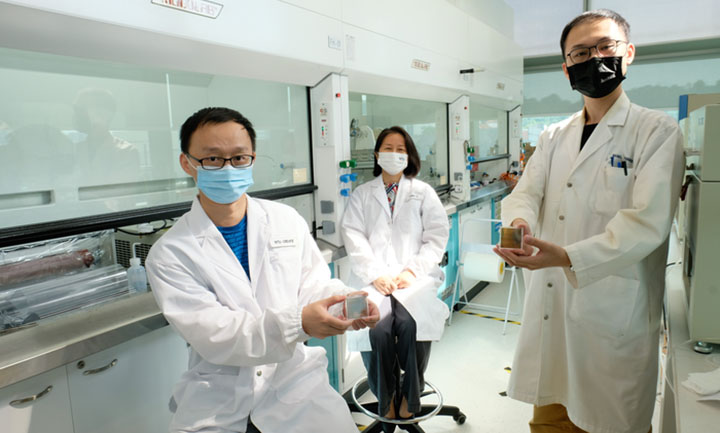Energy-saving glass 'self-adapts' to heating and cooling demand – Dr Long Yi
We are delighted to share the research achievement of Dr Long Yi and team, which has been published in top scientific journal Science.
Dr Long and team have developed a material that, when coated on a glass window panel, can effectively self-adapt to heat or cool rooms across different climate zones in the world, helping to cut energy usage. The first-of-its-kind glass automatically responds to changing temperatures by switching between heating and cooling. The self-adaptive glass is developed using layers of vanadium dioxide nanoparticles composite, Poly(methyl methacrylate) (PMMA), and low-emissivity coating to form a unique structure which could modulate heating and cooling simultaneously. The newly developed glass, which has no electrical components, works by exploiting the spectrums of light responsible for heating and cooling.
Radiative cooling (RC) spontaneously radiates long-wave infrared (LWIR) to the cold outer space, providing cooling power only preferred in hot seasons. RC modulation has been rarely researched. Moreover, RC has been widely researched in walls and roofs but rarely on windows, the least energy efficient parts in buildings. Windows consume ~4% of total primary energy in USA alone. In the conventional smart windows, the modulations of RC have never been studied.
The simulation team led by Professor Gang Tan from The University of Wyoming, USA, and Professor Ronggui Yang from the Huazhong University of Science and Technology, China found that the developed glass showed the energy saving in both warm and cool seasons, with an overall energy saving performance of up to ~ 9.5% in a medium sized office building, or ~330,000 kWh per year (estimated energy required to power 60 household in Singapore for a year) less than commercially available low emissivity glass.
|


 From left to right: Dr Meng Yun, Dr. Long Yi and Dr Wang Shancheng. Source: NTU
From left to right: Dr Meng Yun, Dr. Long Yi and Dr Wang Shancheng. Source: NTU

.tmb-listing.jpg?Culture=en&sfvrsn=3f725dd6_1)


